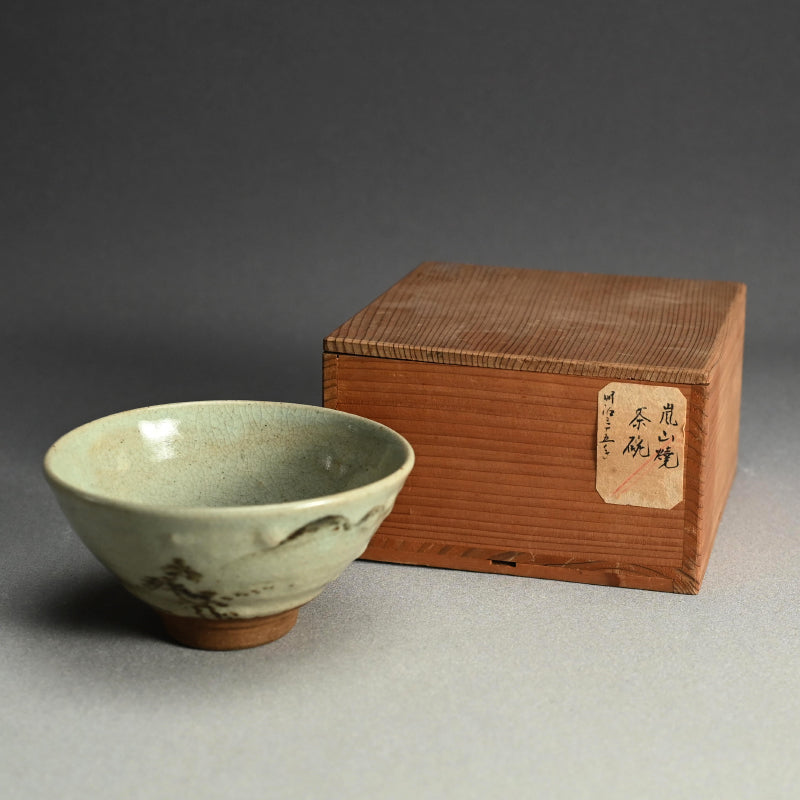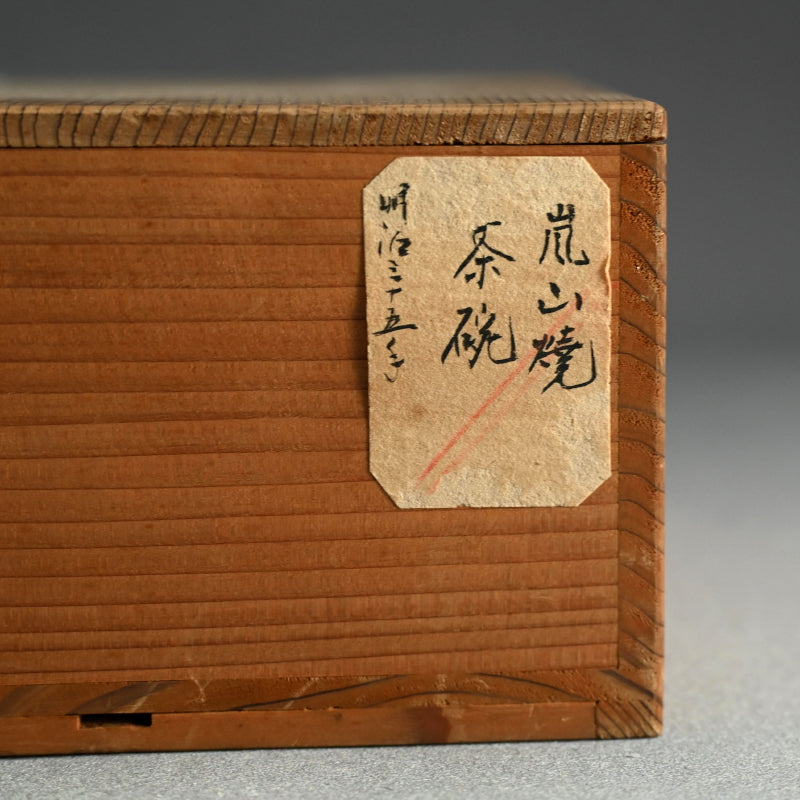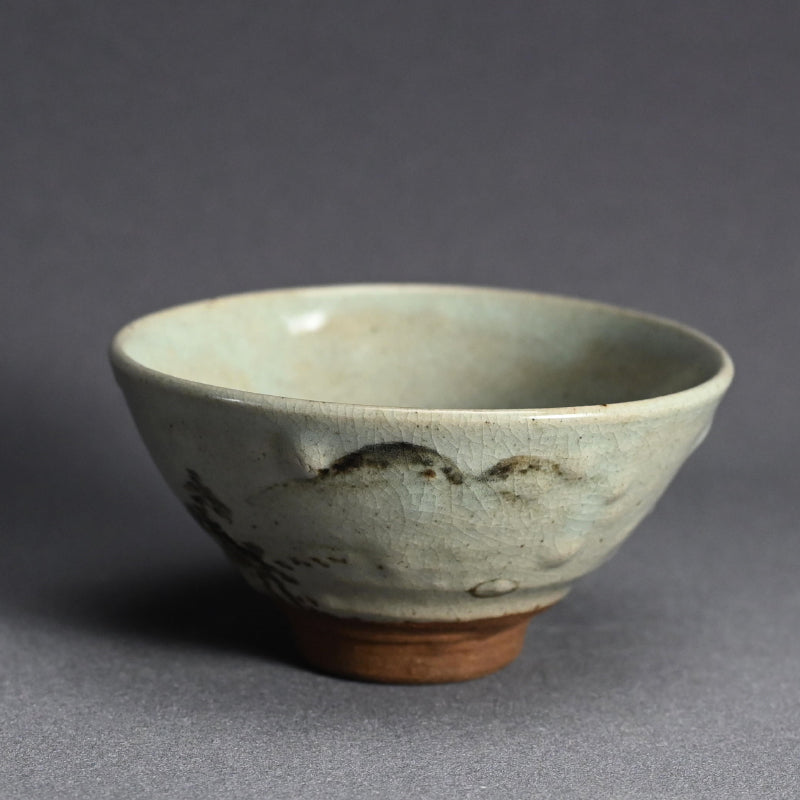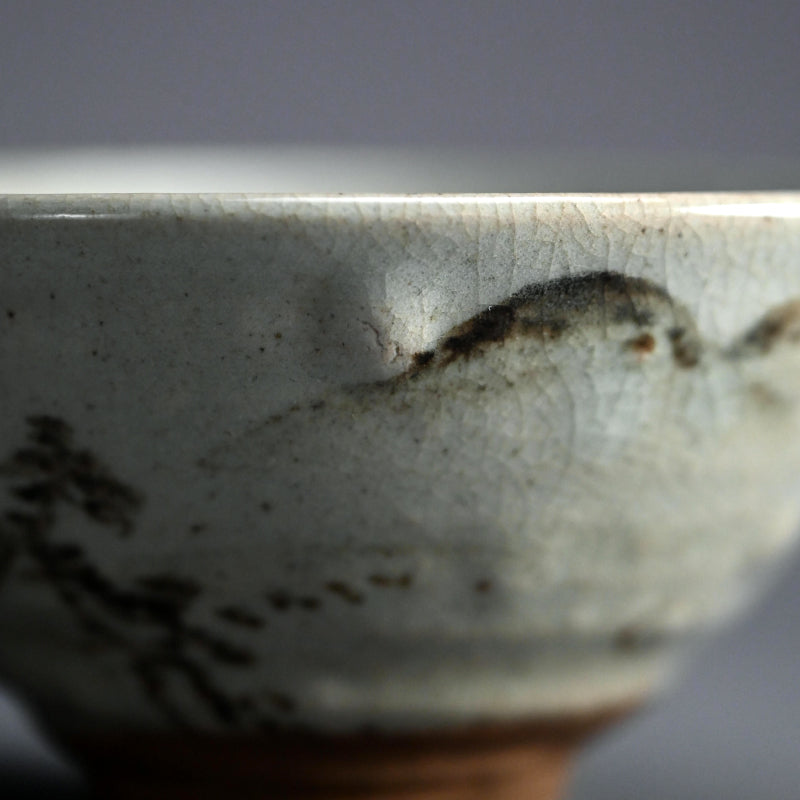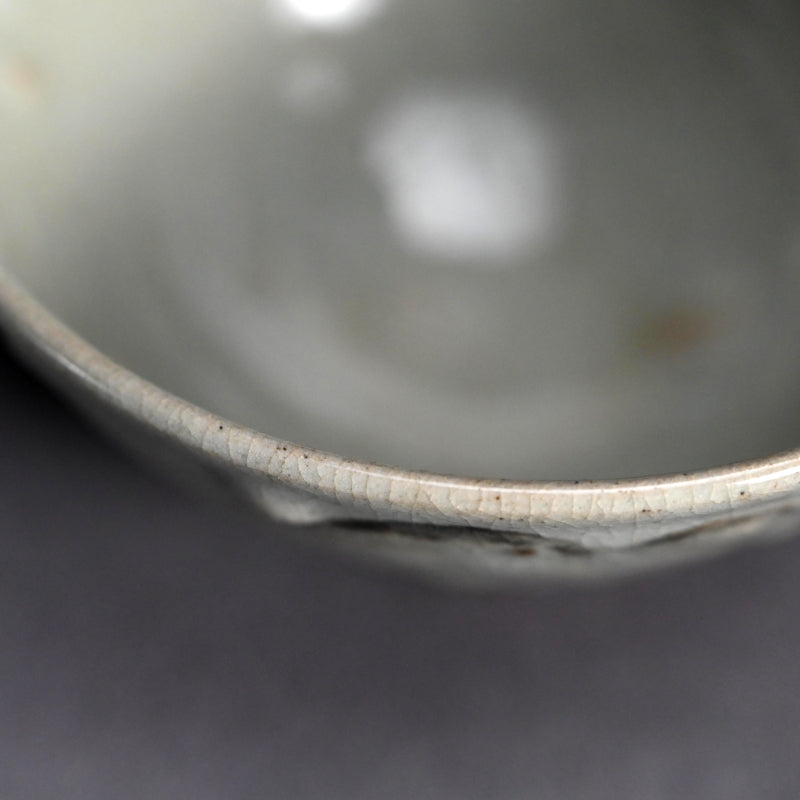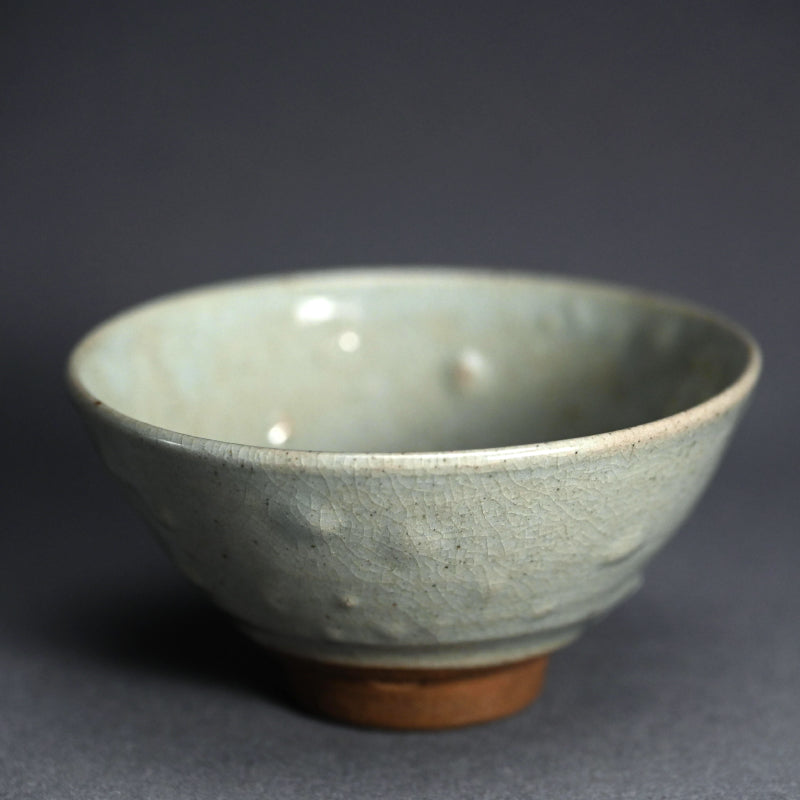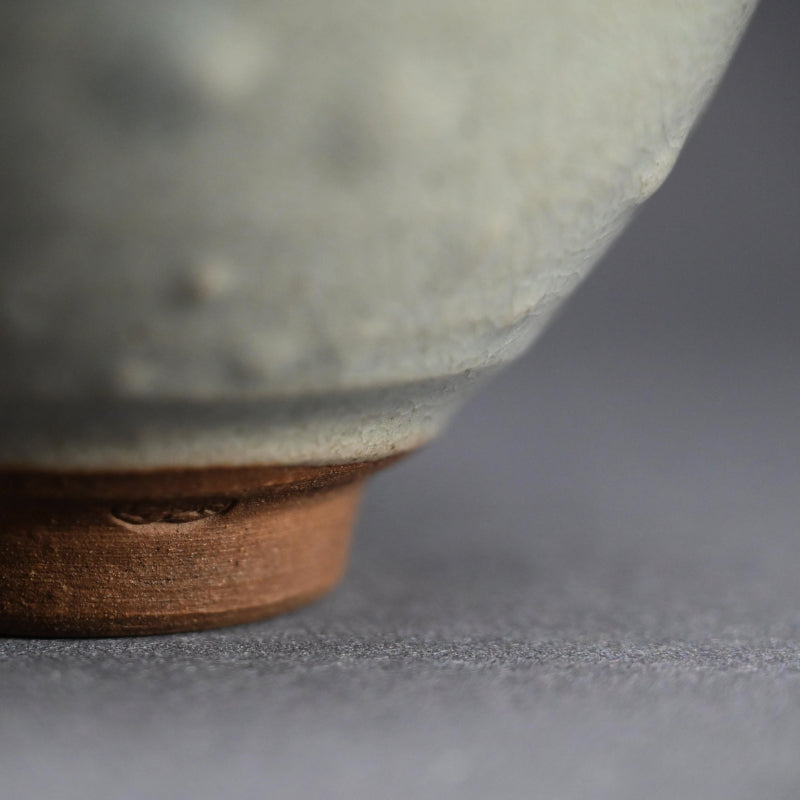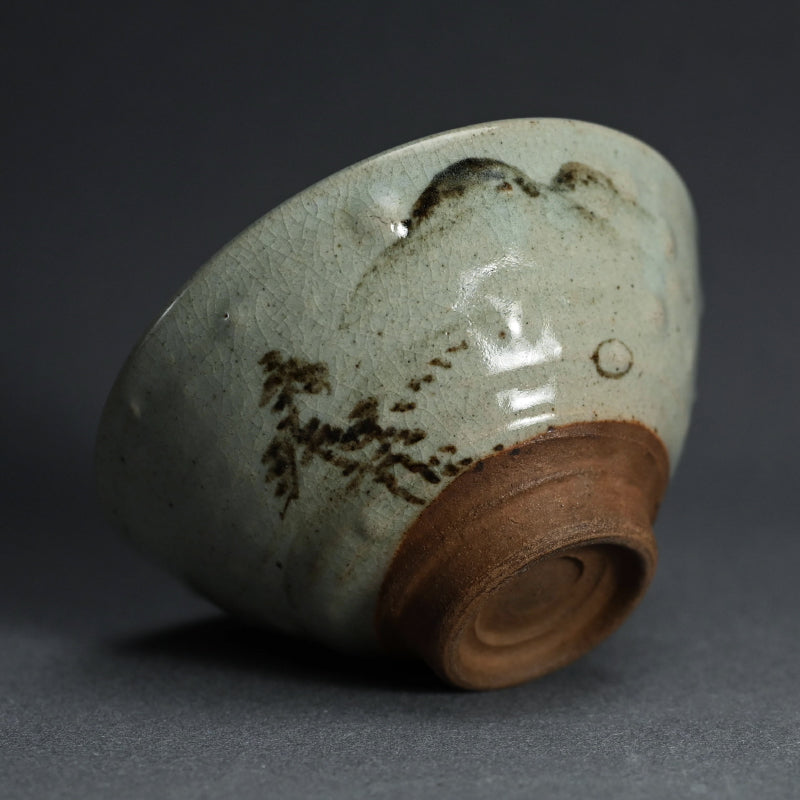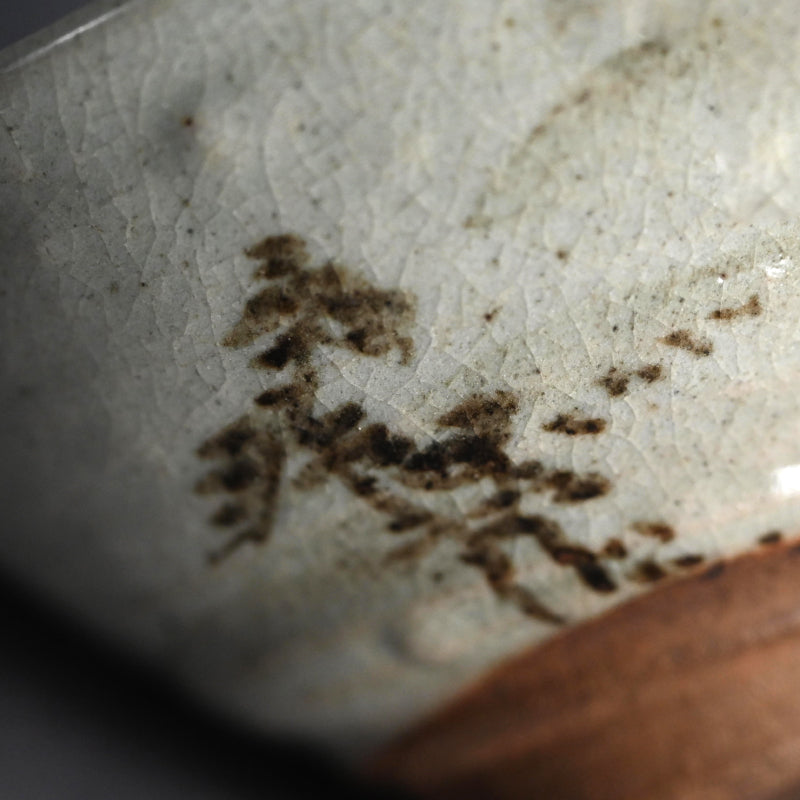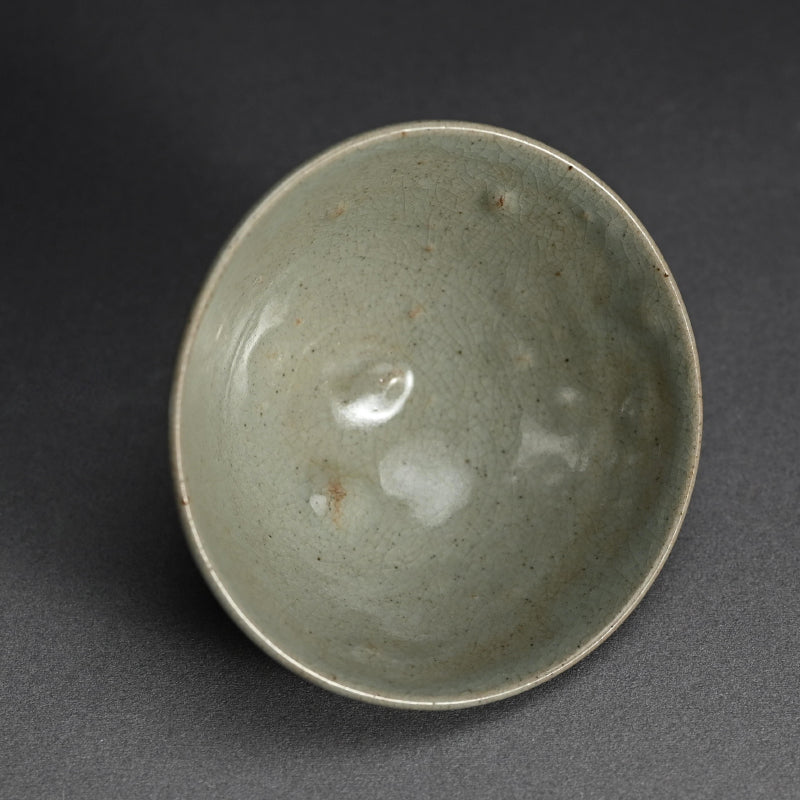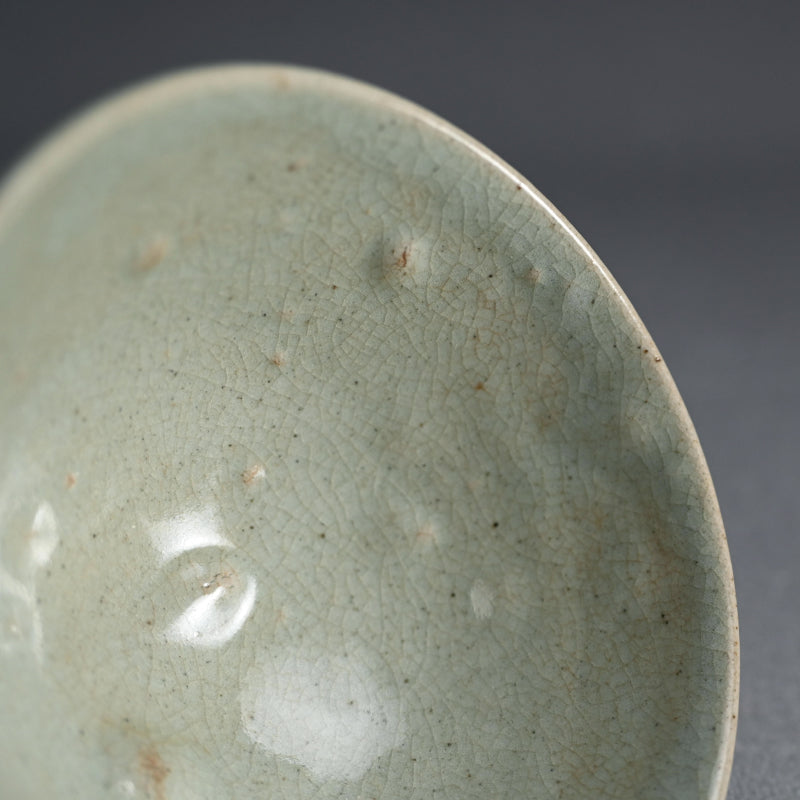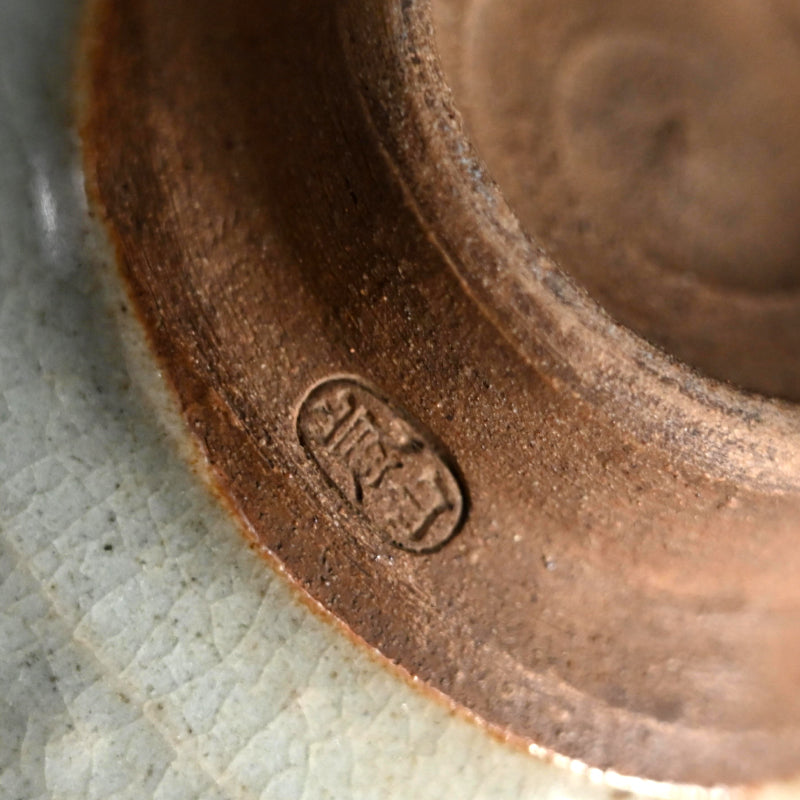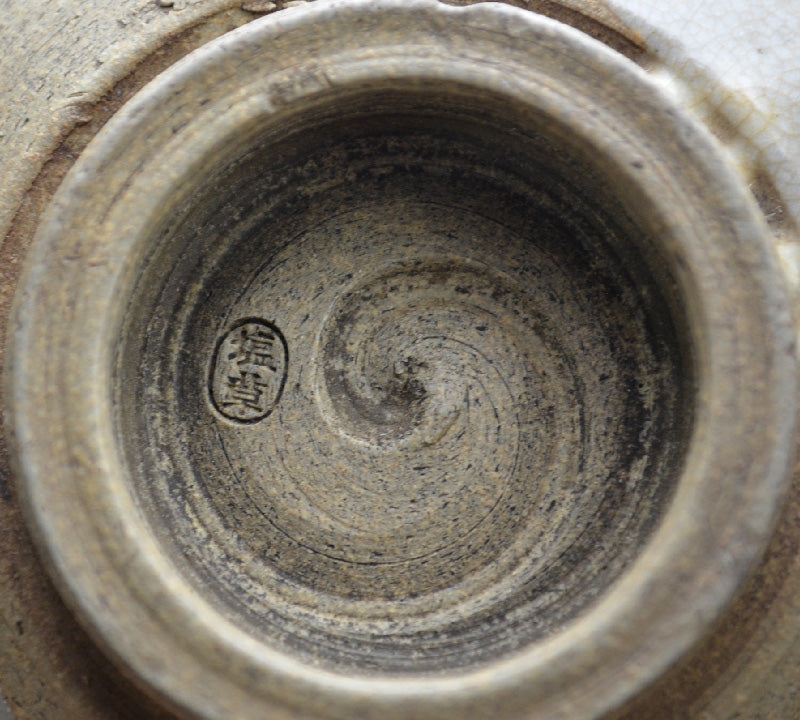1
/
of
15
Elegant Meiji p. ArashiyamaYaki Chawan Tea Bowl
Elegant Meiji p. ArashiyamaYaki Chawan Tea Bowl
Item Code: K304
Regular price
¥55,300 JPY
Regular price
Sale price
¥55,300 JPY
Unit price
/
per
Tax included.
Couldn't load pickup availability
A lovely sedate small Chawan decorated with a rugged pine before distant mountains from the kilns in Arashiyama, Kyoto dating from the Meiji period. It comes wrapped in a beautiful antique silk pouch in a momi-no-ki wooden storage box. The bowl is 12.5 cm (5 inches) diameter, 7 cm (3 inches) tall and in excellent condition, stamped on the base Arashiyama.
Kyoto pottery, now commonly synonymous with Kiyomizu-yaki, had a broader scope of names until the early Showa period. Awata-yaki was equally renowned, and during the Edo period, various regions such as Omuro, Oshikoji, Mizoro, Shugakuin, Iwakura, Otowa, and Seikanji were known for their distinctive ceramics. From the late Edo to Taisho periods, smaller kilns in Saga and Arashiyama in the western part of Kyoto bore their local names, complementing the major centers of Kiyomizu and Awata in the east. by the 1880s and 1890s, kilns established by potters in Arashiyama thrived, producing popular wares which featured iron-painted motifs like clouds, brocade, and floral rafts, often marked with the round “Arashiyama” seal. Some were even inscribed by Yabunouchi Chikusui, as noted by Sasaki Sami. However, the kilns eventually closed, and although Saito Eihō revived Saga-yaki in the Taisho period, it ceased entirely by the early Showa period. Today, electric and gas kilns dominate, and many pottery studios may operate outside the Kiyomizu area, however, their works are generally distributed under the name "Kiyomizu-yaki."
Kyoto pottery, now commonly synonymous with Kiyomizu-yaki, had a broader scope of names until the early Showa period. Awata-yaki was equally renowned, and during the Edo period, various regions such as Omuro, Oshikoji, Mizoro, Shugakuin, Iwakura, Otowa, and Seikanji were known for their distinctive ceramics. From the late Edo to Taisho periods, smaller kilns in Saga and Arashiyama in the western part of Kyoto bore their local names, complementing the major centers of Kiyomizu and Awata in the east. by the 1880s and 1890s, kilns established by potters in Arashiyama thrived, producing popular wares which featured iron-painted motifs like clouds, brocade, and floral rafts, often marked with the round “Arashiyama” seal. Some were even inscribed by Yabunouchi Chikusui, as noted by Sasaki Sami. However, the kilns eventually closed, and although Saito Eihō revived Saga-yaki in the Taisho period, it ceased entirely by the early Showa period. Today, electric and gas kilns dominate, and many pottery studios may operate outside the Kiyomizu area, however, their works are generally distributed under the name "Kiyomizu-yaki."
Share
















